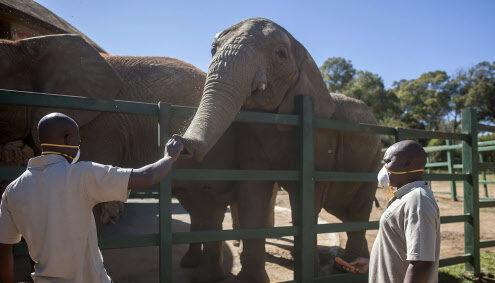Africa-Press – Lesotho. Three quarters of emerging human infectious disease outbreaks are “zoonotic,” originating from viruses and other pathogens infecting animals, then “jumping” species to infect people.
This “species jump” by pathogens is not new; it has occurred throughout pre- and recorded history. But in the last half of the last century, with the widespread use of antibiotics and vaccines, many had begun to believe the era of infectious disease was ending.
The story of epidemics, however, is always evolving. As we see clearly now with the ongoing COVID-19 pandemic, which is believed to have originated from virus-infected meat or live animals sold in a traditional “wet” food market in Wuhan, China, our hopes for the end of infectious disease were badly misplaced.
Over the last 100 years, in fact, there has been growing evidence of not less but more frequent emergence and greater spread of zoonotic pathogens in humans and animals.
For centuries, East and Southeast Asia have been the hotspots of influenza and other emerging zoonotic diseases with pandemic potential, but Africa is catching up.
With the fastest growing and youngest human population of any region in the world, some regions of Africa are now approaching the high density levels seen in Asia.
With increasing human populations and increasing demand for milk, meat and eggs due to rising urbanization and incomes, the densities of humans and domestic animals are also increasing; particularly in coastal West Africa and North Africa and the highlands of East Africa.
These changes are concerning to those watching emerging zoonotic diseases: low population density and stable societies serve as ‘natural preventive measures’. Across Africa in past centuries, infectious pathogens jumping from animals to humans almost always caused limited outbreaks or “burned out”.
For example, simian immunodeficiency viruses have likely been transmitted from primates to humans from prehistoric times but did not cause serious epidemics until the late 20th century.
But the dramatic social, demographic, and health changes of late 19th century Africa helped to transform these occasional pathogenic wildlife-human spillovers into pandemics of human-to-human disease transmission, such as the human immunodeficiency virus (HIV).
This new pattern of disease emergence is unfortunately likely to become increasingly common, given the dramatic rise in Africa’s human population. Increasing human populations, urbanization, and rising incomes are changing Africa in fundamental ways.
One major change is a dramatic increase in air travel between Africa and the rest of the world. While traditionally most African travel connections have been through Europe or the Middle East, in the past decade the number of African connections to Asia has been rising.
The first case of COVID-19 was diagnosed in Nigeria in a traveler coming from Italy. Despite an increase in the movement of people and growing populations, health and social support systems across the continent have lagged.
This emerged as a critical issue in the AIDS epidemic in Africa. Relative to COVID-19, Marius Gilbert and colleagues combined data on Chinese air travel connections with available indices on health preparedness and infectious disease vulnerability indices to rank country risk.
As noted above, Ebola outbreaks in Africa have usually been contained locally; the 2015 West Africa Ebola epidemic spread through countries with very weak health systems. In 2019, an Ebola outbreak in the Democratic Republic of Congo persisted as it occurred in a conflict zone.
The combination of Africa’s weak health systems, the expanding health needs of its growing populations, and its ongoing conflicts are a great concern for the continent’s emerging zoonoses preparedness and response.
The rising risk of emergence and spread of zoonoses across Africa has significant consequences for the continent and the rest of the world. Epidemics in recent decades have varied in both their causes and effects and there are no common guidelines for the prevention or early control of zoonotic diseases.
To increase Africa’s resilience to the threat of emerging zoonoses, regional and global cooperation are essential. The continent’s disease control capacity and preparedness programs should be increased and scarce resources should be transferred to where they are needed most.
These require strengthening regional human (WHO regional office for Africa) and animal health (African Union – Inter-African Bureau for Animal Resources) bodies.
Governments and organizations should also adopt a coordinated One Health response across human, animal and environmental expertise, ministries and institutions. Bringing these three disciplines together is essential to respond to the increasing threat of emerging zoonoses in Africa.
The record thus far on COVID-19 and on past disease outbreaks shows that early, effective, and sustained response is essential to winning the battle over these diseases.
Innovative use of information and communication tools and platforms and engagement of local communities are crucial to improved disease surveillance and effective response.
Building these systems requires demand from the public and commitment from policy makers and investors. COVID-19 is a game-changer. It has shocked the world and continues to disrupt the daily lives of billions of people. Its eventual impacts on Africa are not yet apparent but may be enormous.
But it will also provide important lessons in disease prevention and early response, the kind of lessons routinely ignored in the past, and point the way to combining effective disease-fighting practices linking human, animal and environmental health.
For More News And Analysis About Lesotho Follow Africa-Press






